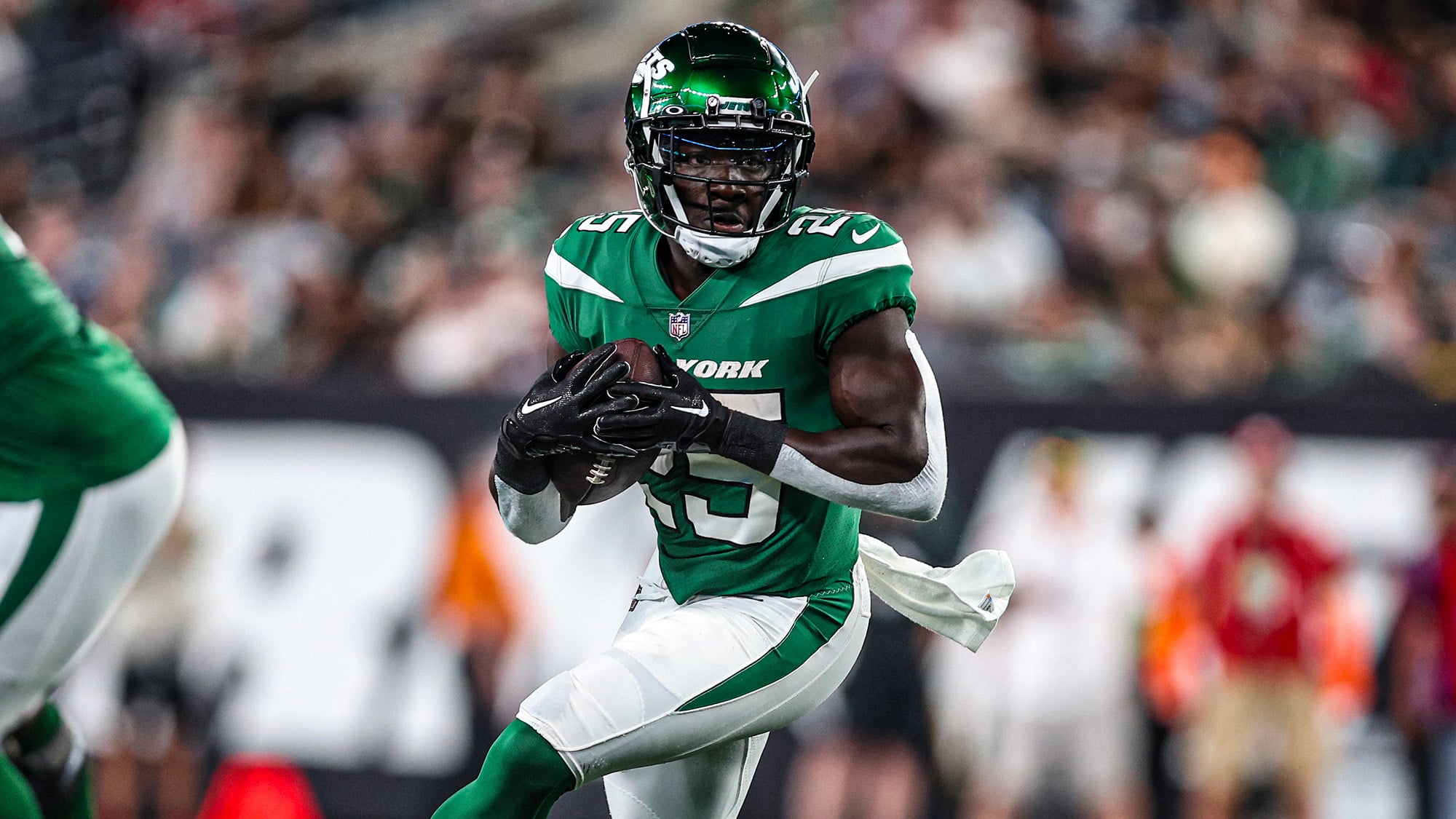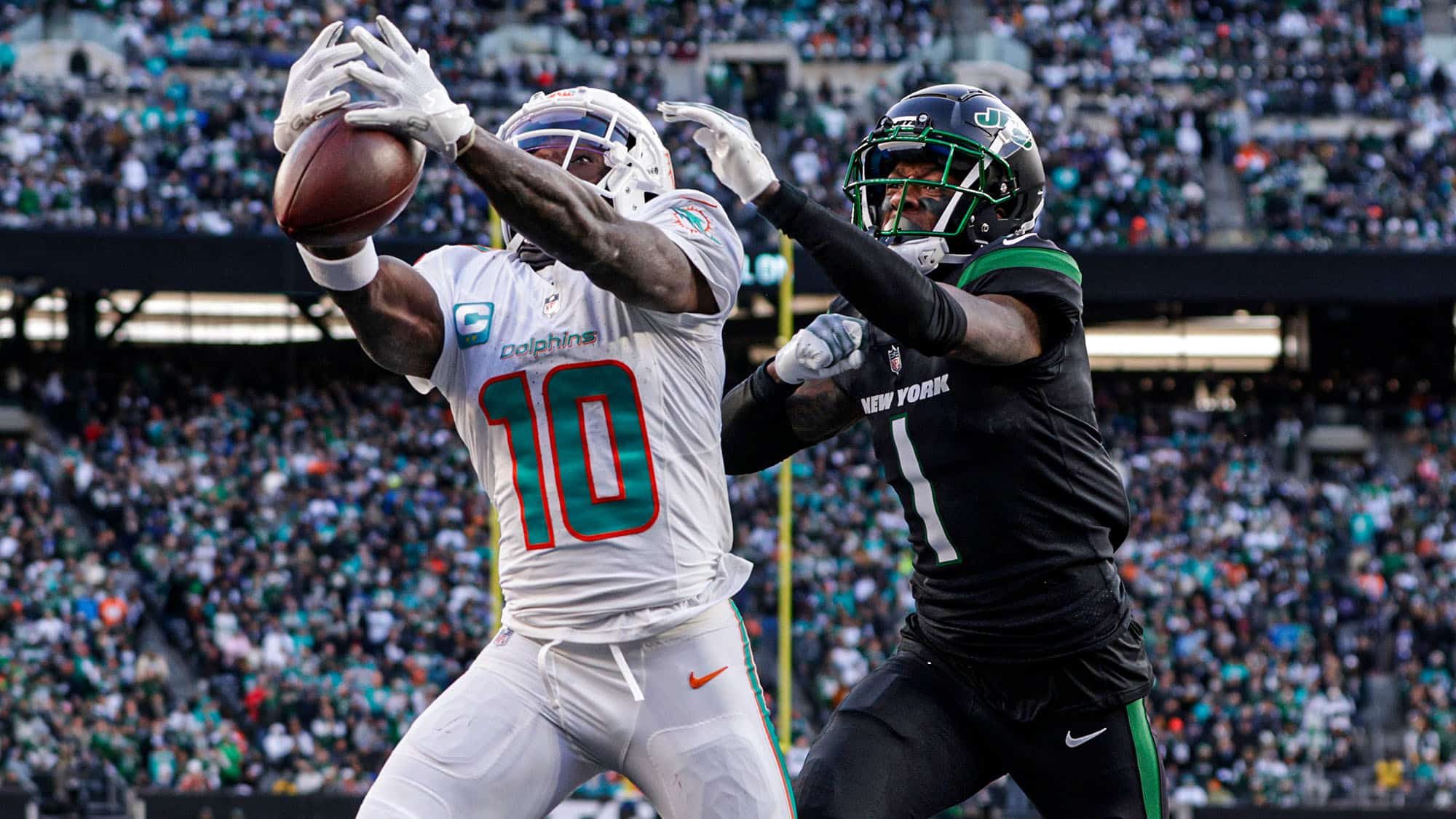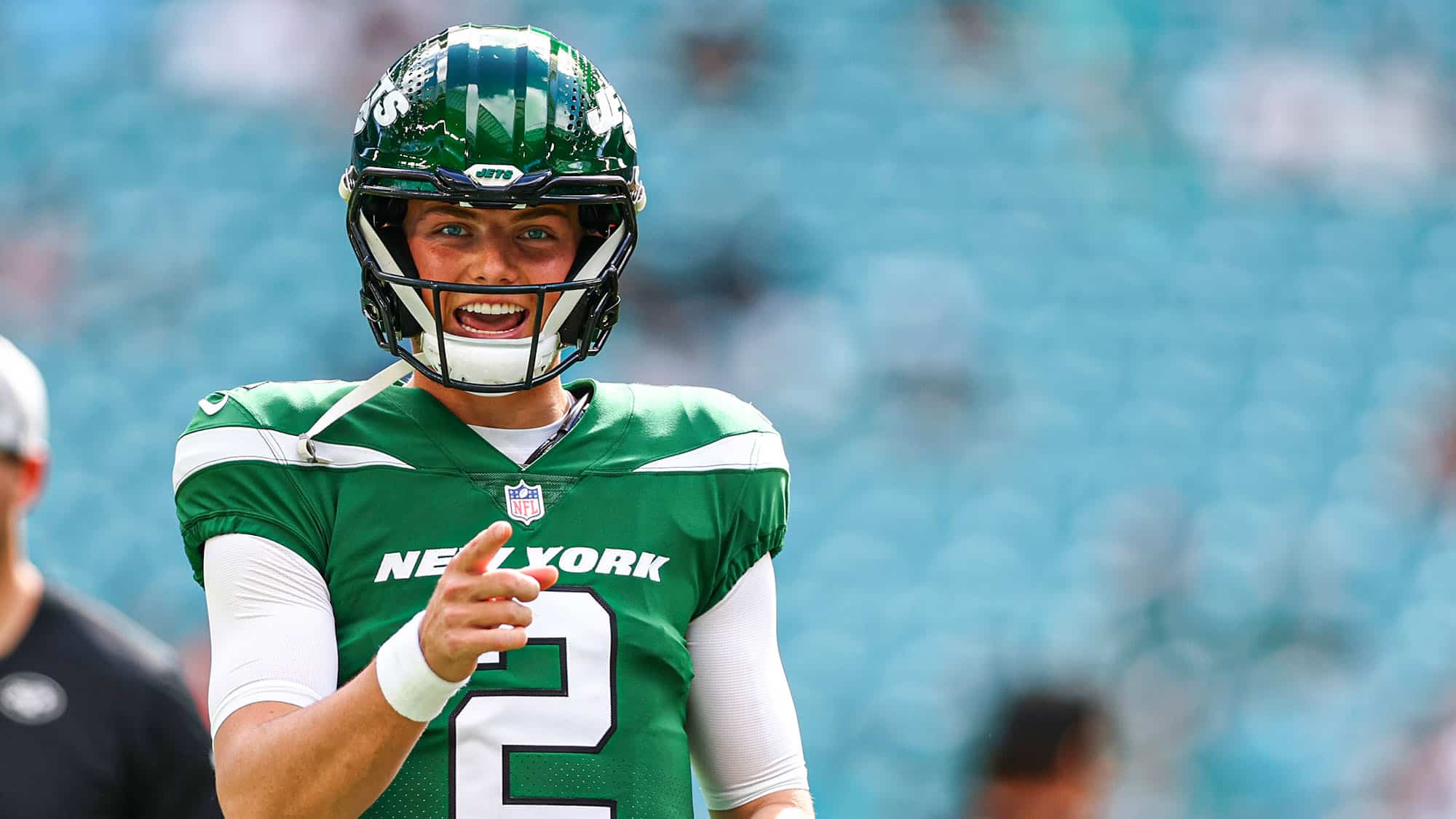The New York Jets may restructure several contracts this offseason. How do these restructures actually work?
Now that we’ve broken down the basic idea of a contract, it’s time to talk about how the New York Jets can manage those contracts. According to Over the Cap, they have just $6.6 million in cap space for next offseason. Although they’ll create some more by releasing players (which we’ll talk about), their most common mechanism for clearing space will be contract restructures.
What does it mean to restructure a contract? Are teams just creating cap space out of thin air? Is the salary cap fake?
New York Jets salary cap primer series:
- Part 1: Basic contract structure
How a restructure works
Restructuring a contract is exactly what it sounds like — restructuring. It’s not a pay cut, at least not without the player agreeing to one (although that’s technically also a restructure). Usually, though, it’s simply recategorizing part of the player’s base salary into a different contract category.
As explained in the last article, the two key parts of a contract are the base salary and signing bonus. The signing bonus was paid up front, while the salary is paid year over year (game over game, really). The benefit of a signing bonus as opposed to base salary is that the cap hit of the bonus can be spread out over the length of the contract, up to five years.
Therefore, what a team can do to save some cap space is to convert some of the player’s base salary into a “new” signing bonus. Now, instead of counting on the cap for just the upcoming season, that salary will count over the remaining life of the contract. The player gets paid more money up front instead of on a game-by-game basis, which is great for him. Everyone walks home a winner.
Quinnen Williams
Here’s an example of a restructure the Jets could attempt this offseason with Quinnen Williams’ contract.
Williams’ base salary in 2024 is $14.4 million and is fully guaranteed. The Jets can convert most of that base salary into a bonus if they so desire. They cannot reduce his base salary to zero; the lowest amount they can leave is the veteran minimum, in Williams’ case $1.125 million because he has five accrued seasons. Therefore, the maximum amount the Jets could attempt to restructure would be $13.275 million. ($14.4 million – $1.125 million = $13.275 million)
How would such a restructure work? Well, as we said, a signing bonus spreads out over the life of the contract up to five years. That means that the Jets can spread out that $13.275 million evenly from 2024-28. (We’ll explain more where the void years came from later.) $13.275 million ÷ 5 = $2.655 million.
Therefore, $2.655 million would be added to the bonus from 2024-28, making the new bonus $7,555,000 ($4,900,000 + $2,655,000) from 2024-27 and $2,655,000 in 2028.
This is how it affects Williams’ contract.
- 2024: $1.125 million base salary + $7.555 million bonus + $1.1 million per-game bonus = $9.78 million cap hit. Cap savings: $20.4 million – $9.78 million = $10.62 million.
These are substantial savings, but the problem is that it pushes even more guaranteed money into future seasons. Now, Williams will count an additional $2.655 million against the Jets’ cap from 2025-28.
This is the maximum restructure of Williams’ contract. The Jets could convert only a portion of his base salary rather than the full salary, and that’s probably what they will do.
Void years
Joe Douglas started playing the game of void years last offseason when he added them not only to the contracts of every player he restructured but also to all new contracts, including free-agent signings.
A void year is essentially a phony year on the contract. It does not exist except for cap purposes. As explained earlier, a signing bonus can spread out over a maximum of five years; therefore, if the contract is not five years long, salary cap rules allow teams to add dummy years to spread out the bonus further.
When those void years come, all the remaining bonus money will count as dead cap in the first void year.
Carl Lawson’s contract illustrates this most clearly.

Lawson took a $6 million pay cut last offseason, reducing his total 2023 pay from $15.3 million to $9.3 million. In conjunction with that, Douglas lowered Lawson’s 2023 cap hit by tagging on four void years for cap purposes. Therefore, instead of having an $8.208 million bonus in 2023, Douglas spread that hit out over 5 years — 2023 plus the four void years. (Why it’s slightly higher in 2023 has to do with his previous contract structure.)
However, even though it looks like there’s a bonus of $1.575 million from 2024-27, all of that money will count against the Jets’ cap in the first void year — 2024. Therefore, Lawson has a $6.3 million dead cap charge in 2024 even though he will not be on the team.
Here is another example of a restructure with void years that the Jets could attempt this offseason (C.J. Mosley).
C.J. Mosley‘s contract is finally coming to an end in 2024. Douglas already added two void years to his contract in September 2022 but opted not to further restructure his deal in 2023. He may just decide to let Mosley ride out the last year of his deal in 2024, too.
Still, if the Jets do want to save some cap space with Mosley’s deal, they can restructure his $17 million base salary. Since Mosley has 10 accrued seasons, his minimum base salary is $1.21 million. Therefore, Douglas could restructure $15.79 million ($17 million – $1.21 million = $15.79 million). In such a scenario, he could choose to leave work with the two void years or add two more.
If there are two void years, $15.79 million ÷ 3 = $5.263 million, which would be added to each of the three years. Mosley’s contract would now be as follows:
- 2024: $1.21 million base salary + $4.476 million previous bonus + $5.263 million new bonus = $10,949,000 cap hit. Cap savings: $21,476,000 cap hit – $10,949,000 = $10,527,000.
- 2025: $2,976,000 + $2,976,000 + $5,263,000 + $5,263,000 = $16,478,000 dead cap.
In other words, making such a move to its full extent would be insane, as it would leave the Jets with close to $16.5 million in dead cap in 2025. Still, this is illustrative. If the Jets chose to add two more void years, the dead cap would be even more extreme.
So is the cap fake?
The restructure and void-year strategies are truly a loophole mechanism with a price. It helps teams in the moment, but if they push too much money into the future, they can completely wreck their ability to be competitive for years to come.
Generally, teams play this game to its maximum only when they’re trying to take advantage of a Super Bowl window. The 2020-22 Buccaneers and the 2021 Rams did this with many of their players. Douglas attempted that gamble in 2023, but it didn’t work out. Now, he’ll likely kick the can even further down the road in 2024. More dangerously, he has every incentive to keep pushing money into the future, as if the strategy fails, it will be a different general manager’s problem.
Mosley’s restructure scenario illustrates the limits of this strategy. It is very difficult for a team to sustain a $16 million dead cap hit from one player in one season. The Jets could end up with a lot more dead cap than that if they keep playing this game.















Interesting article but we should not restructure CJ even though he’s been a very good player but 17m is way too much for an ILB. As his salary is not guaranteed for 2024 we should release him unless he takes a substantial paycut. Releasing him will free up just over 11m in 2024 and just under 3m in both 2025 & 2026 for a total saving of 17m.
I did not say the Jets should restructure Mosley. I’m just explaining what it would look like if they did. I do not think they should release him, as he is an important part of their defense. Perhaps they can discuss somewhat of a pay cut for the sake of the team.
I don’t mine restructures since the cap hit occurs within the life of the contract but I wish void years would be banned. I know it won’t happen but I feel like it’s the definition of loophole/scamming the system.
Look at Ohtani’s contract and tell me why it’s fair to pay him that much but only incur 20ish million over the next 10 years.
I mean, teams would just call them contract extensions for no money. Hard to ban them.
I do agree about the deferred money in Ohtani’s contract, and I think the California legislature is on it.
Damn, Rivka! You have been tearing it up lately with all these columns.
These breakdowns are outstanding! I’m not a math guy but this is good stuff. I do have to say, I think Joe deserves credit for how he’s handled Mosley’s contract. He didn’t sign the player but they have managed the contract well, and in turn the player has been very good for them.
As you mentioned kicking the can down the road is a dangerous game because it’s very difficult to sustain large dead cap hits, however the hope is you can draft some guys to fill those roles who will be on rookie deals. There are some looming concerns that are coming faster than we’d like and that’s the rookie class with Sauce, Garrett, JJ, Breece…and MCII will be a coveted player. I wouldn’t be surprised to see Joe double down by drafting a player they hope can fill one of these roles in the next draft or two. It may look like overkill but there will be no way they can pay all of those guys.